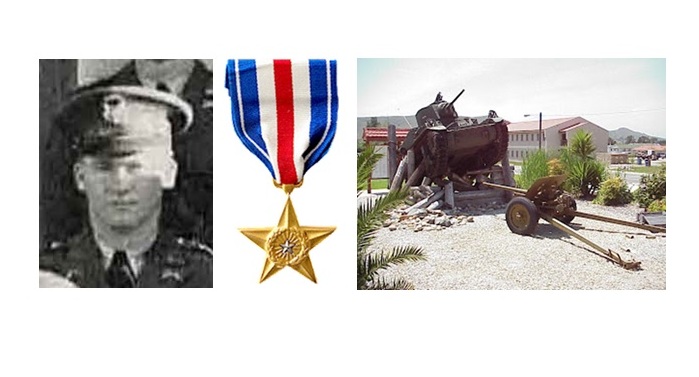2nd Lt. Robert F. Needham KIA outside of Lucban, December 26, 1941
What is known about 2nd Lt. Robert F. Needham was that he was born on October 8, 1916, to James F. Needham & Maude L. Jones-Needham. With his two brothers, he grew up in Hanford, Washington. He attended Washington State University and was a member of the Army ROTC program.
After college, Robert was an adding machine salesman. With his wife, Patricia, he lived at 1530 West Dean Avenue, Spokane, Washington. When he was inducted, he entered the army as a second lieutenant. He was assigned to C Company, 194th Tank Battalion during its training at Fort Lewis, Washington.
Receiving orders that they were being sent overseas, the 194th traveled to San Francisco. At 9:00 PM on September 8, 1941, the 194th sailed for the Philippine Islands from San Francisco. The ship reached Hawaii at 7:00 AM on September 13th. At 5:00 PM the same day, they sailed for the Philippines and arrived at Manila on September 26th.
Robert and the other members of the battalion spent their time in the Philippines by training and readying their equipment for use in maneuvers. At this time, Robert assumed the command of a platoon of C Company tanks.
The morning of December 8, 1941, the tankers heard that the Japanese had bombed Pearl Harbor ten hours earlier. The tank company was ordered to the perimeter of Clark Airfield to guard against Japanese paratroopers. All morning long, the sky was filled with American planes. At 12:30, the planes landed and the pilots went to lunch.
Around 12:45, the tankers were having lunch when planes were seen approaching the airfield from the north. As the tankers watched the planes, they believed that the planes were American. When bombs began exploding on the airfield, they knew that the planes were Japanese. Enormous explosions filled the ears of the tankers while smoke seemed to be everywhere. Being that their weapons were not meant to fight planes, the tankers could do little more than watch.
After the attack, the 194th was ordered to Mabalacat a few miles from Clark Field. The battalion remained in the area until December 12th, when they were ordered to Fort McKinley. The tankers were now part of the South Luzon Force and positioned south of Manila.
On December 22nd, the Japanese landed a large invasion force at Lingayen Gulf. Company A of the battalion was ordered to the Agno River on December 24th, while C Company remained south of Manila.
On December 26th, Robert’s platoon of tanks received orders to proceed to Lucban because the Japanese had landed troops in the area. When the tankers got to the Lucban area, an American officer ordered the tanks up Route 3 to see how strong the Japanese forces were in the area. Part of the reason for the tanks being called to do reconnaissance was that the American command wanted to impress the Filipino troops. Robert protested this move since no reconnaissance had been made of the area. He believed that the tankers could be entering a trap. In spite of his protests, he was ordered to proceed up the road.
Being a platoon commander meant that Robert’s tank was the first tank in the column. As the tanks went down the trail, the trail made a sharp turn. His tank made the turn and was hit by a shell from a Japanese 47 millimeter antitank gun. The shell came through the front hatch and killed his tank driver immediately. The explosion also blew off Robert’s legs killing him. The tank swerved off the road into a ditch. The explosion had caused the front hatches of the tank to be blown off. This left the surviving crew members exposed to enemy fire. As the surviving tank crew members attempted to escape the tank, they were machine-gunned by the Japanese.
2nd Lt. Robert F. Needham was Killed in Action outside of Lucban on December 26, 1941. Since his final resting place is unknown, his name appears on the Tablets of the Missing at the American Military Cemetery at Manila. He was posthumously awarded the Purple Heart and the Silver Star.
After the war, a United States Recovery Team was sent to the Barrio of Piis in the Philippine Islands to recover remains. Local residents claimed that the remains of two Americans were still inside an American tank which had been destroyed during a tank battle in December of 1941. One man was found in the tank driver’s side of the tank and the other was found in the assistant tank driver’s position. The residents did not bury the soldiers but filled the tank with dirt. When the bodies were removed, remains of both men were found in each position. They were buried at Batangas as Unknowns X-7 and X-8. In addition, the remains of a third American were found outside the tank and buried by the team.
The remains of one soldier were exhumed from Plot: 1, Row: 11, Grave: 323, and reburied in Plot: 4, Row: 8, Grave: 999 as Unknown X-3677 at Manila #2 on August 13, 1947. He was designated as Unknown X-4702 when the remains were moved to the new American Cemetery at Manila.





